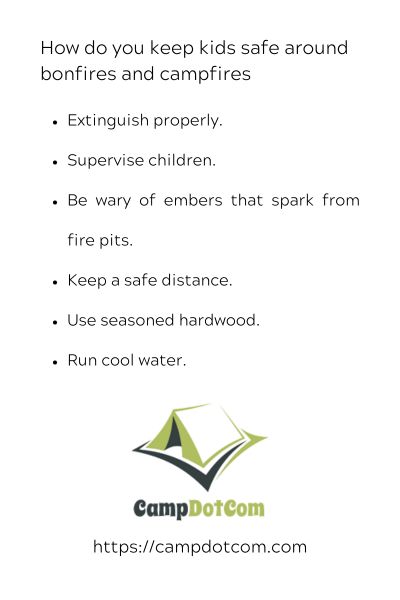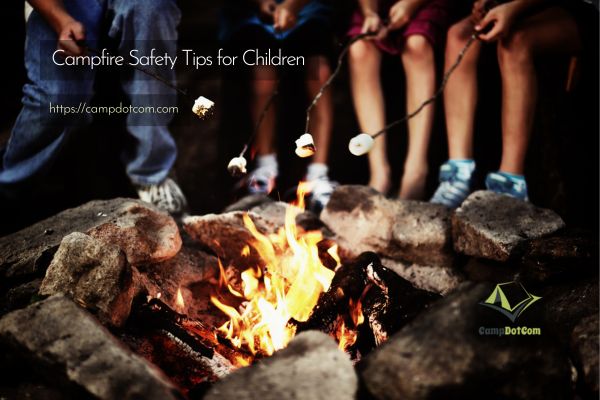Feel the magic of camping under the starlit sky with a twist! Fun glow in the dark games for family camping brings new excitement and adventure to your outdoor experience. As the sun sets and the natural world dims.
Read more about What Are The Best Glow in the Dark Games for Family Camping

These luminous activities illuminate the night with laughter, competition, and unforgettable memories.
More Things To Know About What Are The Best Glow in the Dark Games for Family Camping

Understanding Glow in the Dark Games
Glow in the dark games are specially designed games played at night in low light conditions. The key feature of these games is the use of materials that glow in the dark, creating a magical and exciting atmosphere. Whether it’s glowing balls, beach balls, sticks, flying discs, lawn darts, dark chalk, or even paint, these elements add an element of fun and mystery to the gaming experience.
Importance of Glow in the Dark Games in Camping
Exploring the outdoors during a family camping trip can be elevated to a whole new level with the addition of glow in the dark games, bringing an element of excitement and wonder to the nighttime experience. Glow in the dark games provide entertainment and promote bonding among family members as they gather to play under the night sky.
These games offer a unique way to engage with nature after sunset, creating lasting memories for children and adults alike. Glow in the Dark games can help in teaching valuable skills such as teamwork, communication, and problem-solving in a fun and interactive manner.
Glow in the Dark Ring Toss
To enhance your family camping experience, consider incorporating the fun and engaging glow in the dark ring toss fun game into your evening activities. This game involves glowing rings that you aim to toss onto a target in the dark, adding an extra level of challenge and excitement to your camping fun. Set up the glowing posts or hooks at varying distances and assign different point values to each one to make the game more competitive.
The glow feature of the rings and targets makes it easier to see and adds a magical touch to the nighttime atmosphere. Gather around with your loved ones, take turns tossing the rings, and enjoy a memorable and illuminated camping experience with this glow in the dark ring toss game.
Glow in the Dark Bowling
Consider adding glow in the dark bowling to your family camping activities for an exciting twist on traditional nighttime games. Dark bowling is a fun outdoor activity that will keep the whole family entertained after the sun sets.
Set up glow sticks inside empty water bottles at the end of a bowling lane. Use a glow-in-the-dark ball to knock down the glowing pins. You can vary the distance between the pins and the throwing line to make the game more challenging.
This interactive and visually stimulating game will bring a new level of excitement to your camping trip. Experience the thrill of glow in the dark bowling under the starry night sky!
Glow in the Dark Capture the Flag
For an exhilarating twist on traditional nighttime games during your family camping trip, immerse yourself in the world of Glow in the dark capture the flag. This thrilling version of the classic game capture the Flag game takes on a whole new level of excitement with the addition of glow sticks.
Split your group into two teams with distinct colored glow sticks to mark their territory. The objective remains: sneak into the opposing team’s territory, capture their flag (glow stick), and bring it back to your side without being tagged.
The glowing elements add a strategic element as players can strategize using the darkness to their advantage. For an intense game of dark capture, the flag will keep everyone on their toes!
Glow in the Dark Hide and Seek
Looking for a thrilling twist on the classic game of hide and seek? Nighttime fun became more exciting with glow in the dark hide and seek! Here are some tips to make your game unforgettable:
- Glow Tape: Use glow tape to mark boundaries and safe zones, adding a mysterious glow to the playing area.
- Designated Base: Designate a central base where seekers count while others hide, adding an element of strategy to the game.
- Glowing Objects: Place glowing objects strategically around the playing area to make hiding spots more challenging.
- Team Play: Consider playing in teams for a more cooperative and competitive twist on the traditional game.
Benefits of Glow in the Dark Games
To strengthen the family bond, engaging in glow-in-the-dark games during camping can create memorable experiences for everyone involved. These fun activities add excitement to your family camping trip and foster closeness among family members.
Playing glow-in-the-dark camping games under the starry night sky provides a unique opportunity for laughter, friendly competition, and shared moments that will be cherished for years. The thrill of chasing after glowing objects or solving glow-in-the-dark puzzles together can strengthen the emotional connection within your family unit.
Encouraging Physical Activity
Engage in fun and dynamic glow-in-the-dark games during camping to promote physical activity and enhance the camping experience for your family.
Outdoor games played in the dark add a thrilling twist to traditional activities, encouraging everyone to move more and stay active. Whether it’s glow-in-the-dark frisbee, capture the flag game, or glow stick ring toss, these games provide a unique way to exercise while having a blast.
Camping already offers the opportunity to be in nature and disconnect from screens; incorporating these fun games elevates the experience. Running, jumping, and laughing under the starlit sky won’t only keep everyone physically engaged but also create lasting memories of enjoyable moments spent together in the great outdoors.
Promoting Creativity and Imagination
Amidst the darkness of the night, participants in glow-in-the-dark games can release their imagination and creativity, adding an exciting dimension to the camping experience. Using glow-in-the-dark paint to create unique designs or playing party games under the starlit sky can spark creativity in kids and adults.
The glowing elements provide a canvas for innovative ideas, turning the campsite into a hub of artistic expression. Whether it’s inventing new game rules or crafting luminescent decorations, the darkness becomes a playground for your imagination to run wild.
Feel the magical atmosphere of your camping adventure and let the glow of the night inspire you to find new lands of creativity with your loved ones.
Providing Entertainment in the Dark
At night, glow-in-the-dark games provide an entertaining and unique experience for campers of all ages. Dark games like glow ball can add an exciting twist to your camping adventure, creating a fun atmosphere that captivates kids and adults.
The luminescent glow of these games enhances your night vision, allowing you to navigate the campsite while enjoying thrilling activities. Whether it’s a game of glow-in-the-dark capture the flag or glow stick ring toss, these activities bring a new level of excitement to your camping trip.
With glow-in-the-dark games, you can bond with your family and friends memorably, making your camping experience truly unforgettable.
Safety Measures for Glow in the Dark Games
When engaging in glow in the dark games, remember to choose safe locations to play, use only materials designed for such activities, and establish clear supervision and rules to guarantee everyone’s safety.
These measures are for an enjoyable and risk-free experience during your family camping trip. Keep these points in mind to make the most of your glow in the dark games while keeping safety a top priority.
Choosing Safe Locations for Games
To guarantee the safety of participants during glow in the dark games, prioritize selecting well-lit and open areas as the location for the activities.
When choosing a spot for kids’ games, confirm there are no tripping hazards, such as rocks or tree roots. Opt for areas where camping chairs can be set up comfortably for spectators.
Playing outside in an open space reduces the risk of collisions or accidents in the dark. Avoid locations with steep drops, bodies of water, or dense vegetation that can obscure visibility.
Using Safe Glow in the Dark Materials
For safe glow in the dark games, make sure you use approved materials that are specifically designed for such activities. When planning a glow in the dark party favor, opt for reliable glow sticks and glow necklaces that are non-toxic and safe. These items are designed to emit black light without generating heat, making them suitable for all ages.
Always check the expiration date on glow sticks to make certain they’re still effective. Avoid puncturing or breaking glow sticks to prevent any leakage of their contents. By using high-quality glow in the dark materials, you can enjoy a fun and safe experience during your nighttime activities while camping with your family.
Supervision and Rules to Ensure Safety
Guarantee safety during glow in the dark games by establishing clear supervision and rules for all participants. Proper supervision ensures that everyone stays safe while enjoying the games to play. Here are some safety measures to keep in mind:
| Safety Measure | Description | Importance |
|---|---|---|
| Adult Supervision | Assign adults to oversee the activities and ensure all participants follow the rules. | Ensures constant guidance and assistance. |
| Stay in Designated Area | Define boundaries to prevent participants from wandering into potentially dangerous areas. | Reduces the risk of accidents or injuries. |
| Use Safe Glow Materials | Only use glow products that are non-toxic and approved for use, minimizing health hazards. | Prevents harmful exposure to chemicals. |
Planning and Preparation
To successfully organize glow in the dark games for your family camping trip, careful planning and preparation are essential.
Begin by selecting a variety of games that can be played in the dark, such as glow stick ring toss or glow stick hide and seek. Purchase glow-in-the-dark necklaces to use as markers or to differentiate teams.
Consider filling water balloons with glow-in-the-dark paint for a fun twist on a classic game of toss. Pack extra batteries for any light-up game accessories and have a designated area where the games will take place.
Setting Up the Games
Once you have gathered all the necessary supplies and chosen the games, setting up the glow in the dark activities for your family camping outing involves strategically placing markers and guaranteeing proper visibility in the designated game area. Start by marking boundaries with glow sticks or solar lights to define the play area clearly. Ensure the lighting is adequate for everyone to see but dim enough to maintain the glow effect.
Position the light sources around the game area to create an ambient glow. For games like glow ring toss or glow stick bowling, make sure there’s ample space between players to prevent collisions. Setting up your favorite games in this glowing atmosphere will make your camping party unforgettable.
Rules and Instructions for Each Game
Begin by clearly explaining the rules and instructions for each glow in the dark game you have selected, making sure all participants understand how to play and enjoy the activities under the enchanting glow of the night.
For the ‘Capture the Flag Glow in the Dark Game,’ divide players into two teams, each with a designated flag to protect. The goal is to sneak into the opposing team’s territory to steal their flag and bring it back to your base without being tagged.
In the ‘Dark Game Original Glow,’ players wear glow sticks and attempt to tag others while avoiding being tagged themselves. Set boundaries and establish safe zones for each game to ensure a fun and safe experience for all participants.
Reviews of Glow in the Dark Game Equipment
When choosing equipment for glow in the dark games, consider the best glow in the dark rings for ring toss. Also, look for top-rated glow in the dark bowling sets. Another consideration is the recommended materials for hide and seek. These items can enhance the fun and excitement of your family camping experience, making it memorable for everyone involved.
Best Glow in the Dark Rings for Ring Toss
For the best glow rings for ring toss, look for durability and brightness. The top choices often include premium glow materials that emit a vibrant glow in the dark, making them easy to spot during camping adventures.
These glow rings are designed to enhance your ring toss game in low-light conditions, providing hours of entertainment for the whole family.
Whether you prefer a traditional ring toss or a more challenging variation, having the best glow rings can increase your camping experience and create lasting memories under the starlit sky.
Recommended Glow in the Dark Materials for Hide and Seek
For a thrilling game of hide and seek in the dark during your family camping adventure, consider investing in top-quality glow in the dark game equipment. To enhance your experience, here are some recommended materials:
- Glow in the Dark Bracelets: Perfect for tagging players during the game.
- Glow Stick Markers: Ideal for marking boundaries and safe zones.
- Glow in the Dark Tape: Great for creating temporary paths or designating hiding spots.
- Glow in the Dark Balls: Fun to use as decoys or to track players in the dark.
With these glow in the dark materials, your hide and seek game will be elevated to a whole new level, ensuring an unforgettable camping experience for the whole family.
Frequently Asked Questions
Can Glow in the Dark Games Be Played Indoors And Outdoors?
Yes, glow in the dark games can be enjoyed both indoors and outdoors. They add a fun twist to any setting. Whether camping or in your living room, these games will excite your family time.
Are There Any Age Restrictions for Participating in Glow in the Dark Games?
There are typically no age restrictions for participating in glow in the dark games. It’s a fun activity for all ages to enjoy together. You can have a blast playing these games with your family and friends.
How Long Do Glow in the Dark Games Typically Last Before the Glow Effect Fades?
Typically, glow in the dark games last a few hours before the glow effect starts to fade. Factors like the quality of the glow material and exposure to light can affect the duration of the glow.
Are there any specific instructions for cleaning and maintaining glow-in-the-dark game equipment?
To keep glow in the dark game equipment clean and lasting longer, wipe them down with a damp cloth after use. Store them in a cool, dry place away from direct sunlight. Following these steps will help maintain the glow effect.
Can Glow in the Dark Games Be Modified for Players With Disabilities or Special Needs?
You can modify glow in the dark games for players with disabilities or special needs. Consider using tactile markers, auditory cues, or adaptive equipment. Consult with individuals to tailor the game experience, ensuring everyone can participate and have fun.
Published first here: https://campdotcom.com/best-glow-in-the-dark-games-for-family-camping/

















